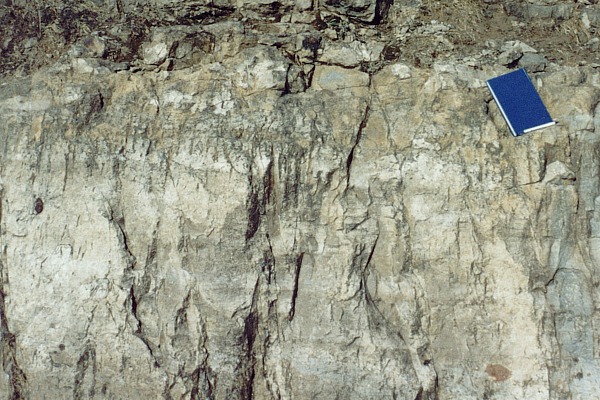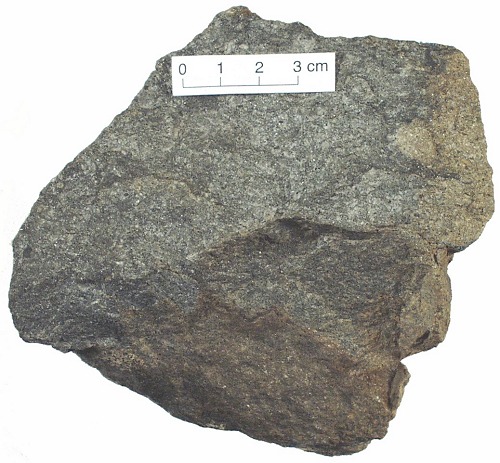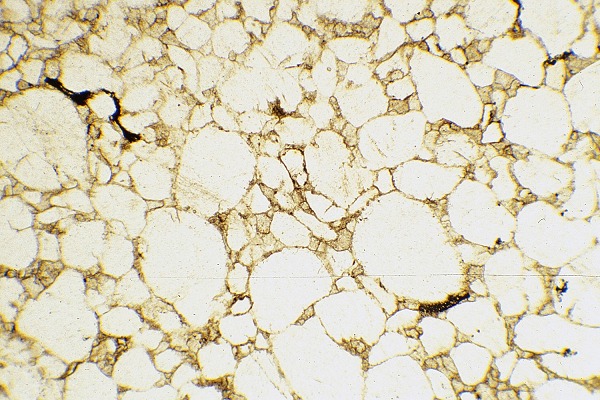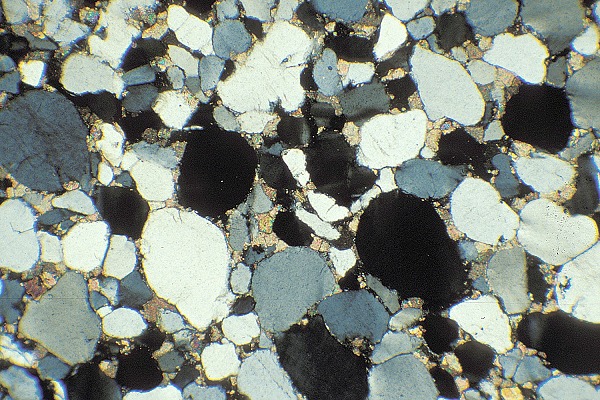
| Home | Geological History | Stratigraphy | Area map | Rock Index | About |
| Scourie | Achmelvich | Laxford | Clachtoll | Stoer | Assynt | Skiag Bridge | Glencoul | Knockan | Borralan | Ledmore |
From road-cuts near Skiag Bridge, Loch Assynt

![]() Quartz sandstone; Cambrian
Salterella Grit, Loch Assynt
Quartz sandstone; Cambrian
Salterella Grit, Loch Assynt
This is a view of the uppermost part of the Salterella Grit
in a road-cut exposure. You can see horizontal bedding
marked by colour (and probably also by grain size)
differences, and vertical grooves, which are weathered-out
parts of vertical burrows like those in the Pipe Rock. The
darker rock just visible at the top of the picture is the
base of the Durness Limestone. The notebook is 20 cm long.

![]() Quartz sandstone; Cambrian
Salterella Grit, Loch Assynt
Quartz sandstone; Cambrian
Salterella Grit, Loch Assynt
In a fresh hand specimen the Salterella Grit is a fairly
coarse, even-grained grey quartz sandstone. It has a
slightly browner and rougher weathered surface than the
basal quartzite, mainly because the material cementing the
quartz grains is different, and is not as hard as the silica
cement in the quartzite. Pits and hollows in the surface
suggest that there is carbonate in the cement.

![]() Quartz sandstone; Cambrian
Salterella Grit, Loch Assynt
Quartz sandstone; Cambrian
Salterella Grit, Loch Assynt
The Salterella Grit is a quartz sandstone that is cemented
in part by carbonate material. In this view, the outlines of
fairly well rounded quartz sand grains are clearly defined.
The carbonate crystals in the cement appear to stand out in
relief, and help to outline the sand grains.
Plane polarized light, field of view 6 mm across.

![]() Quartz sandstone; Cambrian
Salterella Grit, Loch Assynt
Quartz sandstone; Cambrian
Salterella Grit, Loch Assynt
Between crossed polars the quartz grains appear white
through shades of grey to black. Between them, the small,
pearly-speckled grains are carbonate (dolomite).
Crossed polars, field of view 6 mm across.
| Scourie | Achmelvich | Laxford | Clachtoll | Stoer | Assynt | Skiag Bridge | Glencoul | Knockan | Borralan | Ledmore |
| Home | Geological History | Stratigraphy | Area map | Rock Index | About |
D.J. Waters, Department of Earth Sciences, May 2003